Tim Dwyer and I were talking post race, and he teased me about being an oceanographer and overthinking the whole thing. In my defense, here is what I was thinking about during the race.
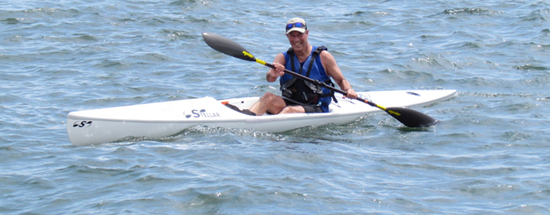 Chris Sherwood after completing his first “Double Beaver”
Chris Sherwood after completing his first “Double Beaver”
At the start, lots of people lined up on the left. I couldn’t see a particular advantage to that side…I knew the tide was near slack, or had maybe already started flooding (that would be bad for the left end…probably a stronger opposing current farther out in the bay) but maybe that end was a little upwind (which would be good) but the wind was pretty light. Since I had never done the course, I was more worried about the route inside House on the Rock. So, should I follow the train and ride some wakes? Or follow Tim, who was lining up on the right? Tim has probably paddled this course more often than I have paddled…ever…so I lined up with him.
Heading toward House on the Rock, I was trying to figure out if there was an eddy in the bay that would be helping us. I was looking at the big sailboats on the moorings, and comparing them with the smaller motorboats. I am always trying to read wind versus current by looking at moored boats. My theory is that big keelboats are more affected by currents than, say, skiffs or catamarans that get blown around more easily. Wind trumps currents, but in really light winds, the boats will point into the current. This get confusing fast, because the boats swing on the moorings, and it is hard to judge angles from kayaks. I couldn’t see any current at all. In the end, Tim merged into the surfski train in 12th place and I was almost dead last…so much for local knowledge.
I was thinking about weeds on the long leg out to Beavertail Point. How often should you come to a complete stop and back up to shake off weeds before you are better off paddling with weeds on your rudder? I did some math. First, how fast are you going without weeds? Second, how much do the weeds slow you down? Third, how long does it take you to slow down, reverse a little, and re-accelerate to your previous speed? Say you (not me) are going 7 mph (that is 3.1 meters per second). Let’s say the weeds slow you down 10%, to 2.8 m/s. Say it take 20 seconds to slow to zero, 5 seconds of backing up, and 20 seconds to get up to speed again. Given those numbers, you’d break even if you shook weeds off about every 5 or 6 minutes. With a few assumptions, you can make an even simpler estimate: if you figure that weeds slow you down by 10%, you should not spend more than 10% of your time shaking them off. Probably way less, because my math doesn’t factor in the other disadvantages to stopping for weeds: it is a lot more effort to stop and reaccelerate than it is to paddle continuously, and you risk losing touch with other paddlers. Not to mention that, viewed from behind by a pursuer, a paddler bracing, eating, or stopping for weeds is like blood in the water.
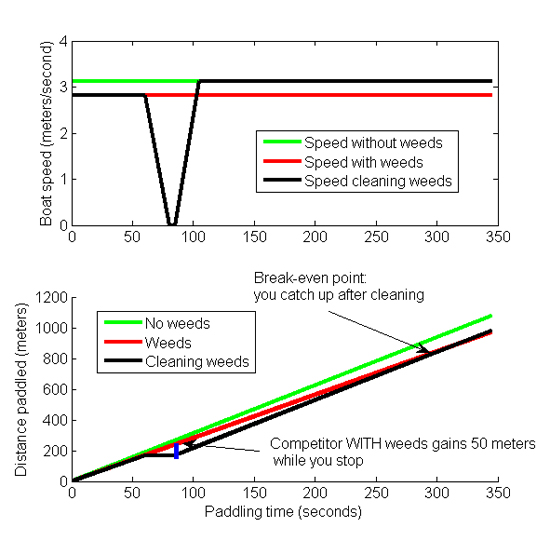
What is the deal with lines of weeds (and foam and other junk)? Sometimes the water is different colors on the two sides, sometimes the waves look different (choppy versus glassy). That was happening off Mackerel Cove on our way out…a long, broad, sinuous line of weeds dividing lighter-colored water onshore from darker offshore water, and I was trying to figure out whether there was any advantage to be gained on one side or the other. Sometimes these lines are formed by currents going in opposite directions (think classic eddy line) and you want to be on the side going your direction. It was choppier offshore, so I guessed that the stronger flood tide was opposing the wind a little, so I should be inside. Maybe there would be a current boost there, but there were more weeds inshore, and the route was indirect and closer to the cliffs with rebounding waves. So I made the worst choice, and basically paddled through weeds for longer than I should have. You can see this indecision, as well as the killer effect of too many weed stops, in my GPS track.
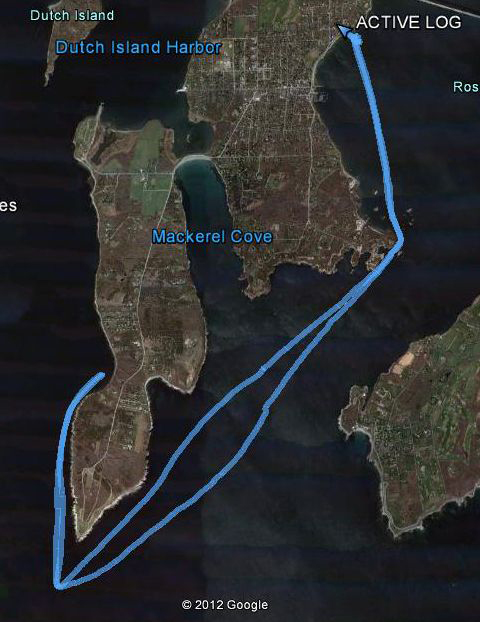
By the time I got near Beavertail Point and starting thinking about reflected waves, I had two examples to choose from. I had a great view of the pack from my strategic location at the back. People who had taken a direct line to the buoy were getting pushed north into channel west of Jamestown Island (Look at your GPS track…I bet it curves south toward the buoy). Bill Kuklinski, on the other hand, had gone way offshore, south of the layline. I didn’t know if he was avoiding the rough water near the cliffs, adjusting for the tide, or both. How far offshore would I have to go avoid being slowed down by lumpy waves from the cliffs? I knew that the cliffs were steep, so they were good reflectors of wave energy…something like 60 – 80% of the incoming waves would be bounced back. That meant that some places and times, waves would be half again as high as the incoming waves; at others, they would almost cancel out, reducing wave heights to less than half of the incoming energy…but the variability would require continual adjustment. It made it easier that the wave crests were almost exactly parallel to the cliffs, and the cliffs were pretty straight. When waves hit cliffs at an angle, or when the cliffs have lots of points and bays, the waves bounce off at angles, making a crazy interference pattern with the incoming waves. There was not too much of that off Beavertail…it could have been a lot worse. I also knew that waves dissipate pretty slowly with distance in deep water, so the reflected waves would travel far offshore. I figured I’d have to just deal with the waves, and take the shortest line to the buoy, keeping in mind the tide. My GPS shows I took a very straight line. The waves were still pretty wild out by the buoy. I don’t know how far offshore you’d have to go to avoid the reflected waves.
Going north, I stayed close to the cliffs seeking shelter from the wind, until I ran into Eric who was disengaging himself from fishing line. As any oceanographer knows, fishermen love targets to cast toward…I moved a little farther offshore.
On the way back, after rounding the buoy, I headed pretty far out. I was hoping to catch the flood current, and maybe get a little bit upwind. This was a brilliant strategy, and I probably would have caught the leaders had they not already finished.
At this point, you have probably checked my finish time and come to the conclusion I would have done a lot better if I had been thinking about stroke cadence, driving my legs, getting my blade in vertical, rotating, and breathing, rather than frontal convergences and wave reflection coefficients.
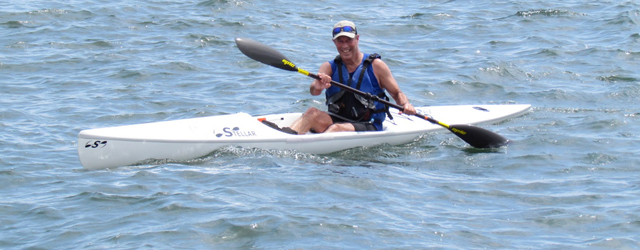
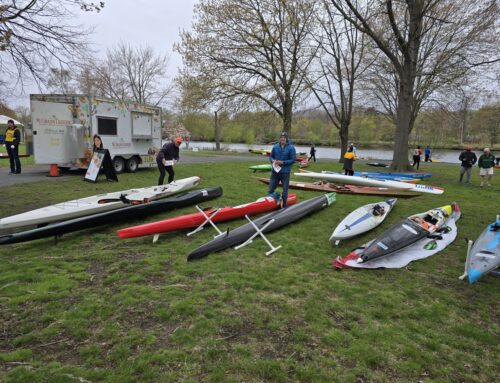
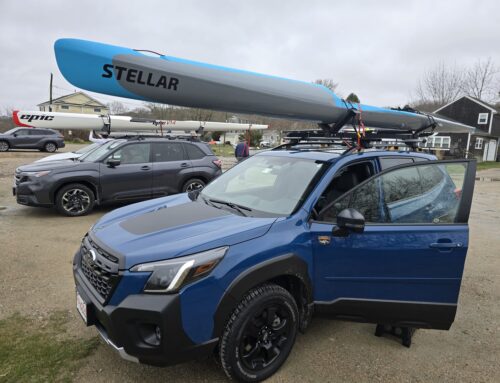
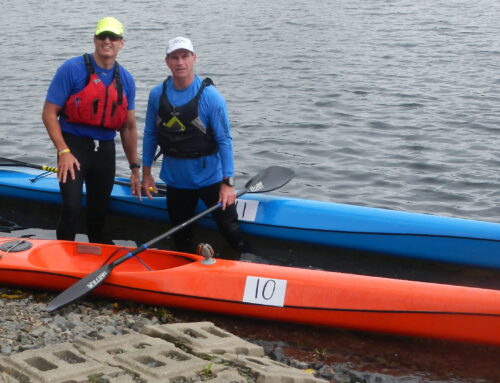
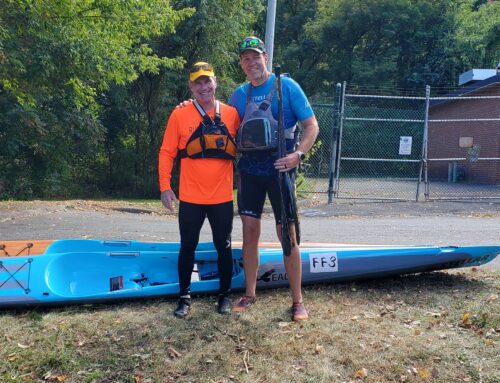
Leave A Comment
You must be logged in to post a comment.